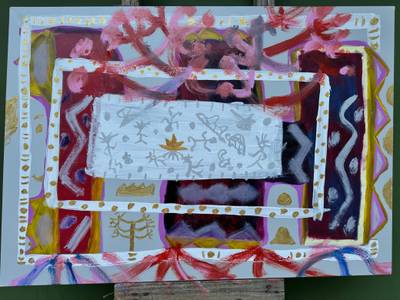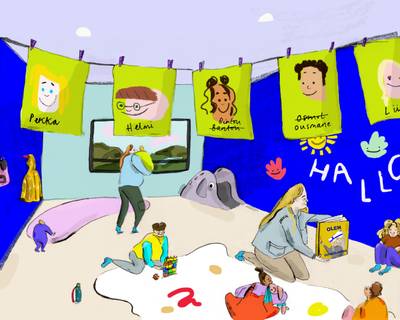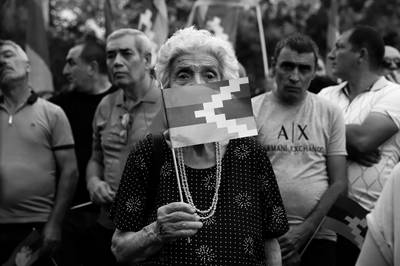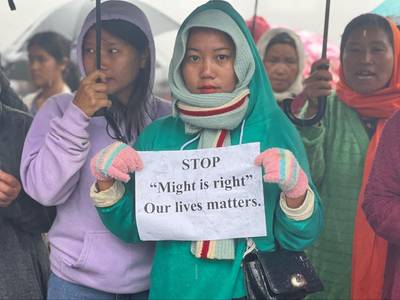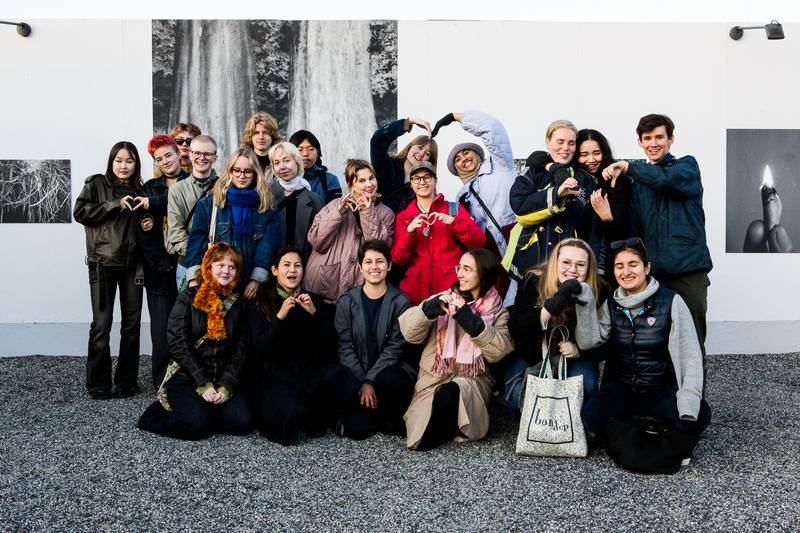

PY, ITAB and PTAB at Fotografihuset, Oslo, October 2023. Credits: Katrine Eltvik.
Micol Curatolo is a curator, producer and educator. Her professional interest lies at the intersection of border politics, contemporary art, feminist and antiracist work. Micol’s practice investigates movement, migration, identity, and participation, exploring tensions across the local and the global, the public and the private. Since August 2022, Micol works part-time as the project coordinator of PUBLICS Youth Advisory Board.
When I was a kid, a friend asked if I had been dreaming of flying. I shook my head and was met with his disappointment. As an adult, he admitted, he hadn’t seen that dream in decades. He believed his youth had ended when he could no longer dream of flying. The world, he said, looked kinder from the sky.
The thoughts that follow are born from my experience as the project coordinator of PUBLICS Youth Advisory Board, a yearly collective of 18- to 21-year-olds working to question and expand PUBLICS’s programme while co-creating a platform for their personal engagement in cultural production.1 What can curatorial education do for young adults today? How does age matter? Can one ever create alternatives from within?
“PUBLICS Youth is a group of young people from different backgrounds and interests that learn about the art world together." It is “an opportunity to get to know each other by means of cultural exchange," explain Board members Matilda Järvi and Isabella Oropeza.2
At first glance, the reasons to be of a Youth Advisory Board in an established organisation are two: to strengthen it and/or to initiate a change. Throughout this text, I hold two focus points that are simultaneous and dependent and yet, at times, contradictory: one are the needs, priorities, and centrality to this project of the Youth Board members and their journeys; and the other are the logics, needs and economy of PUBLICS as an entity and a structuring of labour.
Three lessons have emerged in my perception of this project around which I continue to develop my work with the Board: the importance of understanding oneself in relation to another; a collective agency can transform more than one alone could; one’s personal and collective learning must be accompanied by institutional learning for change to take place.
The nitty-gritty
Established in 2022, PUBLICS Youth Advisory Board (PY) hires every year ten young adults living in the Uusimaa region and has so far welcomed three boards. The members are selected through an open call, which does not require prior experience and education.3 The Board is employed on a yearly contract and receives a monthly fee. All its meetings are facilitated and vary from workshops, production, collaborations with artists, visiting exhibitions, and attending events. Every year, the Youth Board publishes a final production, which so far has taken the form of podcasts, radio, printed matter, and video.
PUBLICS Youth exists in partnership as one of the three young collectives of the network Future Futures with Index Teen Advisory Board at Index Foundation (Stockholm, Sweden) and PRAKSIS Teen Advisory Board at PRAKSIS (Oslo, Norway).4 The Boards travel to meet each other at the Nordic Youth Conference that they organise and host every year.
Becoming a body that advises the association requires to initiate change, to question habits, and to make a malleable place for the members’ work. Board member 2023 Gabriella Presnal explains that the project supports “not just becoming more familiar with traditional professional figures like the artist or the curator, but also with the spaces in between, or around these roles”, recognising that they are permeable.
A place within
From the beginning, the Youth Board has negotiated its (changing) collective voice within the functioning of PUBLICS. As the Youth Board develops its own identity, this difference creates the capacity and freedom to move within and from the organisation. Rejecting assimilation, in a way, while figuring out a place within. Expressing this, I don’t intend to reinforce otherness between the PY members and the team, but to allow a level of mismatch in the puzzle of these two pieces – some air to jiggle in!
It’s important to acknowledge that structures instinctively harden up when their habits shift and require the formulation of a partially new identity. The purposefulness of jiggling is subtle but vital: to let things tremble just enough that the structure that gave us a name can grow with us without becoming too stiff. A leeway between the Youth Board and the organisation, being “our own within”, pokes the project to find its own ethos. Truly taking in the Board’s advice, in whatever form it might emerge, requires PUBLICS to rethink, at least, its communication and forms of engagement internally and within the local context. The key, however, is that this work cannot be merely self-reflective. Rather, it must consider and actively nourish the personal and collective agency of ten individuals and their intellectual livelihoods.
Within the scope of PUBLICS’ program, I believe it is important that the Youth Board does not become a platform for young art professionals only, but develops into a space for engaged youth who might not pursue a formal education in the arts and are searching for alternative forms of access. I have been committed to ensure that the Board becomes a supportive space for the knowledges and trajectories of BIPOC youth, for different learning and social needs, for youth outside academia, and for queer livelihoods. I state this knowing that - while I write today from my experience - the Board is not about its coordinator but is about and by its members.
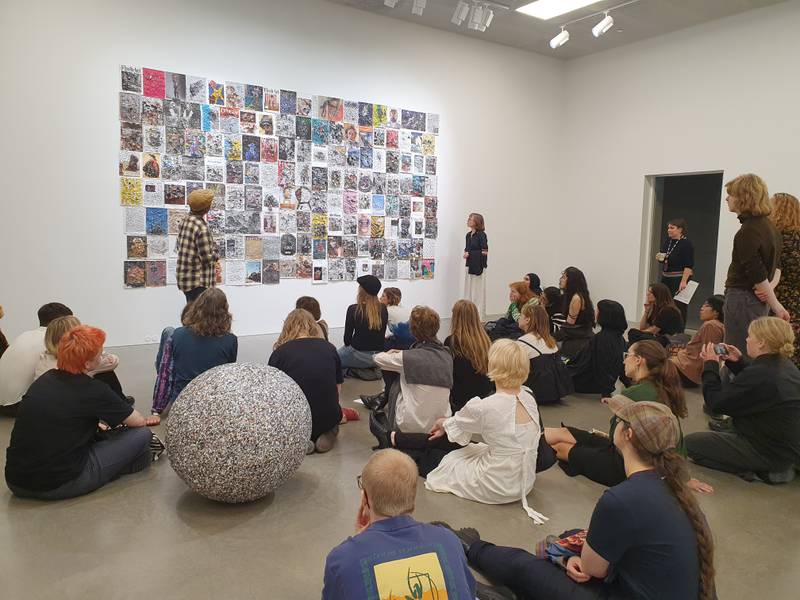

PY, ITAB and PTAB at Nitja senter for samtidskunst, Oslo, October 2023. Credits: Micol Curatolo.
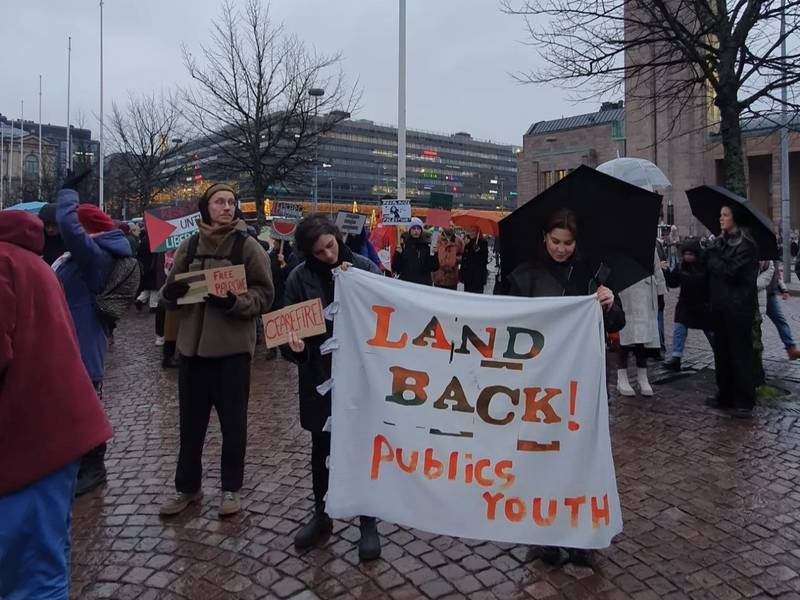

PUBLICS Youth attending a demonstration for a ceasefire in Palestine, November 2023. Credits: Micol Curatolo.
The purpose of jiggling
Three topics especially became important for the Board in 2023: the socio-political responsibility of sharing the resources and platforms offered by the organisation; whether the category of “youth” proved helpful to them; and what are the practicalities and actions of creating a safe space for their collective work.
These have come together, for example, in their explicit support to the Palestinian resistance. To begin with, they attended demonstrations under PY’s name, donated their prints for fundraising, and discussed the use of the Board’s social media. This process of politicising their work has left a lot to the project: a habit and a protocol for making collective decisions within the group, whereby some members could safely represent PY in active ways; the public presence of the Board in urgent contemporary discourses, which has set an interesting position for the following group to start from; the initiation of a necessary dialogue with PUBLICS around the organisation’s engagement; and, not least, witnessing the members becoming more socially engaged beyond the project, too. Collective work teaches about responsibility.
Vanessa Uhlbäck, Board member in 2022, recognises that “when we listen, we also learn, and that is how change and advising take place.” Similarly, current board member Matilda Järvi reflects on her first months in the group: “It is my responsibility to say what I have to say. I tend to hold on to my opinions, as I’m not sure if others are interested in hearing them. But I’m overcoming my own insecurities. Being heard brings its own pressures.”
It’s safe to say that the most common response to contemporary art by the so-called “general audience” is <<I don’t understand it>>. The negative self-judgement that we have learnt to associate with the experience of not understanding is something people carry from normative schooling systems. Shaming not understanding is a tool of social order.
The Youth Board 2024 started their tenure in April. Sitting in the library on an early-summer Saturday morning, we were discussing their impressions after attending a reading group with curators Maaretta Jaukkuri and Tominga O’Donnell launched as part of PUBLICS’s educational and research platform, the Centre for Curatorial Thinking. Board member Arnav Ghurde expressed his discomfort with struggling to access the professional experiences and vocabulary of the reading group. Accepting that his knowledge is situated elsewhere—outside of “the field of curating"—was helpful, Arnav said, to stay in the space as himself.
Cultural theorist and curator Irit Rogoff writes in her book Terra Infirma that actively unbelonging can be a powerful strategy to thread a new relationship with a socio-geographical context that considers us “outsiders”. The questions that followed on Arnav’s comment were <<What is our role at PUBLICS? What are we here for?>>. The purpose of jiggling; every board, I hope, finds their own. Board member 2023, Aliina Kemppainen, commented that the project morphs every year to look and sound like its members. I was proud to hear this recognition of honesty, proving that the group has managed to achieve a conscious territory to pass over to the next members.
(On learning) Institutional thresholds and personal responsibilities
Erika Ryppieva looks with sharpness at the slower start of the first Youth Board in 2022:
“Due to COVID-19 requirements, the first board faced difficulties with meeting offline. As a result, we collaborated on our final project while still getting to know each other. Navigating uncertainty demanded a lot of trust, which was gradually growing. This experience has made it easier for me to get involved in different collaborations: to work with magazines, events, and exhibitions. I have learned that teamwork calls for sincerity and care, as well as flexibility. During my time on the Board, I’ve had to face my own prejudices and limitations, too. […] I’ve realised that learning happens best when a person jumps headfirst into something new. It calls for going back to a childlike mindset and approaching things with curiosity. Building relationships with other Board members became simpler the more I pushed myself outside of what I’m used to. Embarking on this journey as a group required this responsibility of staying open and present. It requires showing up and making an effort.”
It’s safe to say that the most common response to contemporary art by the so-called “general audience” is <<I don’t understand it>>. The negative self-judgement that we have learnt to associate with the experience of not understanding is something people carry from normative schooling systems. Shaming not understanding is a tool of social order. So, when we are working with art education, as most projects catering for youth do – we have to face the implications of this territorialisation, which most spaces for art reinforce, and the gatekeeping it perpetuates. If we understand cultural production as a way of being in an ecosystem with others, of making life for each other; the least we can do as art professionals is to notice when habit makes our work so self-referential that it’s impossible for our neighbours to engage with us.
PY has continuously grounded me back into the real registers of conversation in Helsinki’s emerging social context. During the first meeting of the Board 2023, for example, the members discussed how different class backgrounds have influenced their access to art. Between the lines of that conversation, they had begun to face one of the major problems of contemporary arts, in my opinion: how extensively we assume a shared understanding of vocabularies, forms of interaction, and coded behaviours, which professionalised individuals have learnt to navigate as a matter of habit. Habit makes things stiff and provides comfort. Habit is the ground for a collective belonging, which is reinforced against those who don’t share the same codes.
A conversation that has kept occurring in the Board and which appears also in their open message, ‘Dear Friend, Letter for Nine Voices’, is how entering museums and galleries can feel overwhelming.6 Visiting exhibitions together, I try to point out how the space is designed to make people feel watched or seen. The difference is one of moral judgement: if you’re watched, you’re being evaluated and asked to self-regulate to fit an expectation; if you’re seen, you’re accepted and recognised the way you are, and you’re asked to contribute in your fashion. I think this leads us to the question of representation from a useful angle. An organisation’s working with young people does not equal to the organisation being diverse; there needs to be room for all members to act and to make decisions, besides being taught or being explained to on the basis of their age.
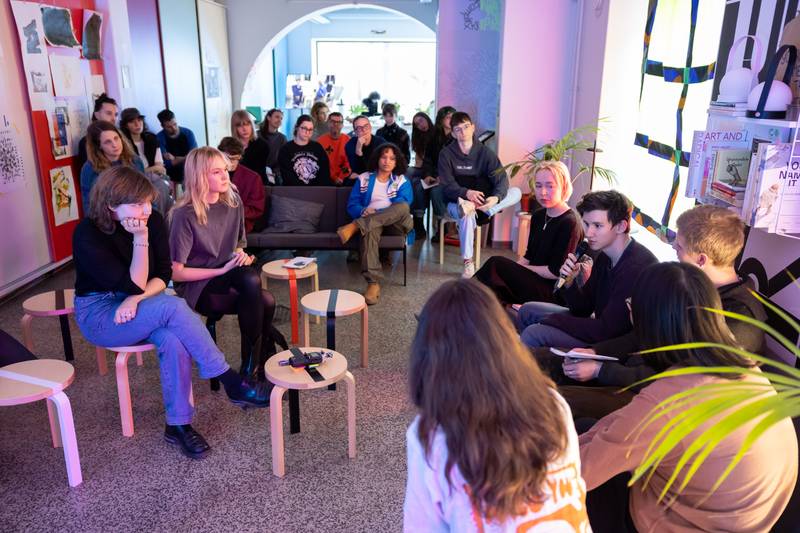

PUBLICS Youth Takeover, March 2024, PUBLICS, Helsinki. Credits: Aman Askarizad.
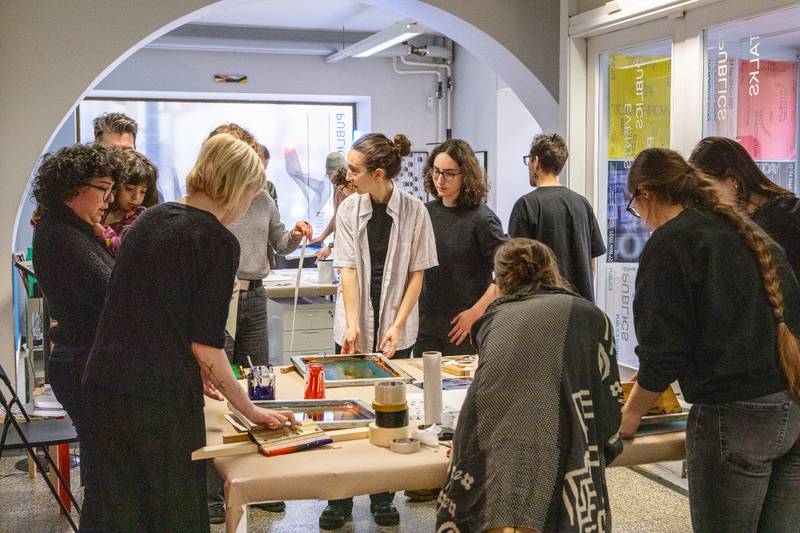

PUBLICS Youth Takeover, March 2024, PUBLICS, Helsinki. Credits: Annabelle Antas.
Age and the question of <<Why?>>
In their radio live at Helsinki Open Waves, last year’s Board questioned how young creatives are being invited to provide content or to share experiences, without putting in place the structures to support their independent action and organising long-term.7 At #StopHatredNow2024, previous Board member Gabriella Presnal shared their perplexity around the role of institutional exhibitions catering for young artists, like Nuoret 2023 and Generation 23.8 The argument that the members are making isn’t against the opportunities that are already in place but against their insufficiency. Gabriella expands:
“While these projects and exhibitions are great opportunities for young artists at varying levels (Generation 23, for example, does not require a professional curriculum), we must question their overarching aim. Are they simply to represent a couple dozen individual artists and their individual processes? Or is it about transforming how youth are engaged with at an institutional level? […] It could be more about aligning [the industry] with a youth culture and collective process, rather than individual practices. If, for example, we reflect on past youth artistic movements, like graffiti, do we witness the same energy, a youth movement, evoked in contemporary exhibitions? If not, perhaps they should. How do they represent not only fifty individuals but a collective conversation, process, and visual culture built by us? And, how is that represented spatially, pedagogically, and bodily, in addition to artistically and curatorially?”
One important message from last year’s Board is that we need more sustainable working structures. Hopefully, similar projects can provide some stability. Erika Ryppieva comments that “the connection between old and new groups is very special for navigating the arts without the community provided by an institution, like a university. I am grateful for having a shared experience.”
Coming from different disciplines, careers, and life paths, the members bring to the table different knowledges and skills and hopefully implement them as a team. This is also true between PY and their partners abroad. I have managed the Youth Board as a space of peer-learning, and in this peer-learning relation I locate myself too, while acknowledging the formal privilege granted by my position and contract. Not being a member of the Board, I never speak for them but aim to represent them fairly. Nonetheless, being peers isn’t a matter of age; it is one of self-positioning. I believe that peer-learning is the key for a real exchange between generations, too.
“Young,” “old,” “middle-aged,” as well as “early-career,” “mid-career,” and “established” are personal and structural positions from which we move within this society. They are often accompanied by paternalism, showing internalised expectations around one’s capacity and behaviour based on their age. These often justify hierarchical structures and power play. I have learnt that age is nothing more than another coloured lens through which we experience reality and ourselves, and that these experiences can be extremely interesting and useful to explore when taken account of without prejudice.
Sharing generational experiences can help understand how socio-political events shift our perception of the present, our capacity of imagining the future, and how these appear in the ways we labour and produce. Board member Vitória Freitas, for example, notices that by meeting professionals from different fields, she could learn not only from their “academic experience but also their perception and values regarding safe spaces, political views, inclusivity, etc. That was very important as someone who had recently moved to Finland.” When we talk about intergenerational exchange, we are also speaking of these forms of navigation: the possibilities of (inter)dependent and mutual action that we create for one another.
Other names for flying: dreams
My friend grieved his capacity to defy gravity and felt shame knowing that his body couldn’t navigate the world as his imagination could. During my time with the Boards, I witnessed that for some art is still a magical, immersive matter that moulds into alternative worlds and a way of experiencing how close to the sky they can get. For others, art is a profession, craved for and exhausting at once. For others still, it is something mysterious that sparks both curiosity and rejection. The category of “youth” homogenises the variety of these perspectives, each acting in the world differently and needing different responses.
While youth can be an age of dreaming, young people’s contribution is much more than a play with utopias. Stop expecting youth to make work about being young only. We want to talk about the world: about ecological rehabilitation, friendship, rage, fear, countercultures, rest, alternatives to the nuclear family, free love, the abolition of gender, the abolition of borders, music, food, the ocean, self-determination,… dreams. Do our dreams hold their anarchic potential after they leave the private and enter our work life? What if dreaming has begun to feel impossible for our generation?
Curatorial work can teach conversational ways of thinking, help formulate comprehensive frameworks for our experiences, and interpret the intersections of different practices, timelines, and structures. Curatorial work also teaches about making things happen from what we have at hand—a place, a few people, and an idea.
Starting their career, people are faced with a creative industry running on multitasking and burnout, with plenty of things to do that are seldom paid fairly, and a lack of professional continuity. For young adults, this manifests as an anxious rush into professionalisation on institutional terms. In my experience, this anxiety is produced by a combination of unstable work conditions and extremely high requirements, even for entry-level positions. Simultaneously, people in their late teens and early twenties express increasing scepticism towards universities, which are failing to nurture knowledges connected to society outside academia.
Education outside institutions should, at least, politicise our interactions with culture, especially when working with people who aren’t art professionals or art students. We must encourage them to navigate art and its labour on their own terms, autonomously and critically. Curatorial work can teach conversational ways of thinking, help formulate comprehensive frameworks for our experiences, and interpret the intersections of different practices, timelines, and structures. Curatorial work also teaches about making things happen from what we have at hand—a place, a few people, and an idea. Maybe this is what I wish for today—that we could slow down and rebuild our practices around good site-specific work. In the cohabitation of a place, its environment, a few people, their cultures, and an idea, we have everything that matters to change the world. Maybe, here, flying has other names than in the skies of our dreams. Flying is to break suprematist and patriarchal narratives, to end racism, to abolish, to provide safety and continuity, to avoid overproduction, to multiply opportunities, to choose one’s own conditions of work, to stand against hate, to be braver, to vocalise what is going wrong, to listen, to really work with and for each other.
Note:
- Youth Advisory Board 2024
- Akanksha Bhat, Arnav Ghurde, Helena Massuda Garcia, Isabella Oropeza, Joanna Lagerblom, Kaius Kuhmonen, Linh Dan Vu, Matilda Järvi, Yelyzaveta Babaieva, Yu Yue
- Youth Advisory Board 2023
- Vitória Fiorella Freitas, Lucas Jordi, Aliina Kemppainen, Aapo Kivivuori, Stella Massa, Gabriella Presnal, Spencer Strachan, Emmi Surwillo, Yu Yue
- Youth Advisory Board 2022
- Anastasiia Lapteva, Manda Loipponen, Valeriia Masliukova-Malova, Erika Ryppieva, Róza Turunen, Vanessa Uhlbäck
